Yarn from slaughterhouse waste
ETH researchers have developed a yarn from ordinary gelatine that has good qualities similar to those of merino wool fibres. Now they are working on making the yarn even more water-resistant.
Some 70 million tonnes of fibres are traded worldwide every year. Man-made fibres manufactured from products of petroleum or natural gas account for almost two-thirds of this total. The most commonly used natural fibres are wool and cotton, but they have lost ground against synthetic fibres.
Despite their environmental friendliness, fibres made of biopolymers from plant or animal origin remain very much a niche product. At the end of the 19th century, there were already attempts to refine proteins into textiles. For example, a patent for textiles made of gelatine was filed in 1894. After the Second World War, however, the emerging synthetic fibres drove biological protein fibres swiftly and thoroughly from the market.
Over the past few years, there has been increased demand for natural fibres produced from renewable resources using environmentally friendly methods. Wool fibre in particular has experienced a renaissance in performance sportswear made of merino wool. And a few years ago, a young entrepreneur in Germany started making high-quality textiles from the milk protein casein.
New use for waste product
Now Philipp Stössel, a 28-year-old PhD student in Professor Wendelin Stark’s Functional Materials Laboratory (FML), is presenting a new method for obtaining high-quality fibres from gelatine. The method was developed in cooperation with the Advanced Fibers Laboratory at Empa St. Gallen. Stössel was able to spin the fibres into a yarn from which textiles can be manufactured.
Gelatine consists chiefly of collagen, a main component of skin, bone and tendons. Large quantities of collagen are found in slaughterhouse waste and can be easily made into gelatine. For these reasons, Stark and Stössel decided to use this biomaterial for their experiments.
Coincidence helps provide a solution
In his experiments, Stössel noticed that when he added an organic solvent (isopropyl) to a heated, aqueous gelatine solution, the protein precipitated at the bottom of the vessel. He removed the formless mass using a pipette and was able to effortlessly press an elastic, endless thread from it. This was the starting point for his unusual research work.
As part of his dissertation, Stössel developed and refined the method, which he has just recently presented in an article for the journal Biomacromolecules.
The refined method replaces the pipette with several syringe drivers in a parallel arrangement. Using an even application of pressure, the syringes push out fine endless filaments, which are guided over two Teflon-coated rolls. The rolls are kept constantly moist in an ethanol bath; this prevents the filaments from sticking together and allows them to harden quickly before they are rolled onto a conveyor belt. Using the spinning machine he developed, Stössel was able to produce 200 metres of filaments a minute. He then twisted around 1,000 individual filaments into a yarn with a hand spindle and had a glove knitted from the yarn as a showpiece.
Attractive luster
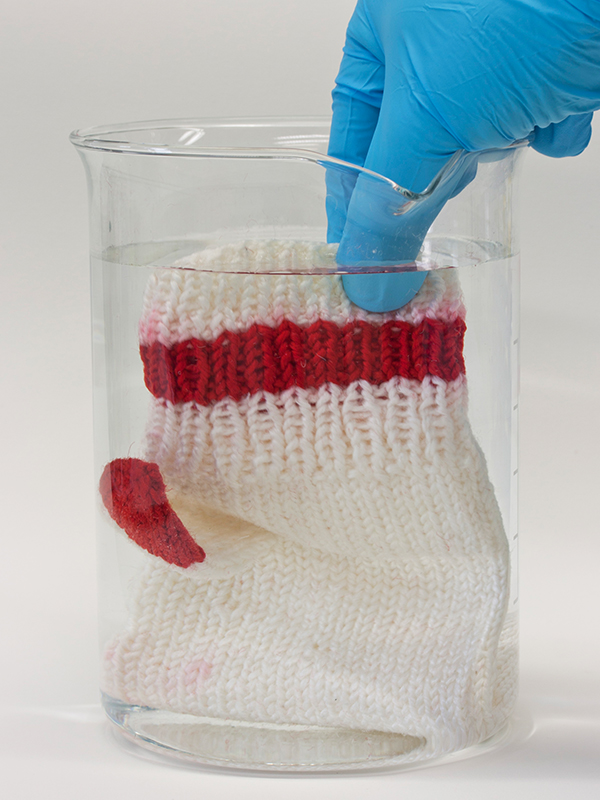
Extremely fine, the individual fibres have a diameter of only 25 micrometres, roughly half the thickness of a human hair. With his first laboratory spinning machines, the fibre thickness was 100 micrometres, Stössel recalls. That was too thick for yarn production.
Whereas natural wool fibres have tiny scales, the surface of the gelatine fibres is smooth. “As a result, they have an attractive luster,” Stössel says. Moreover, the interior of the fibres is filled with cavities, as shown by the researchers’ electron microscope images. This might also be the reason for the gelatine yarn’s good insulation, which Stössel was able to measure in comparison with a glove made of merino wool.
Water-resistant fibres
Gelatine’s major drawback is that it its water-solubility. Stössel had to greatly improve the water resistance of the gelatine yarn through various chemical processing stages. First he treated the glove with an epoxy in order to bond the gelatine components more firmly together. Next, he treated the material with formaldehyde so that it would harden better. Finally, he impregnated the yarn with lanolin, a natural wool grease, to make it supple.
As he completes his dissertation over the coming months, Stössel will research how to make the gelatine fibres even more water-resistant. Sheep’s wool is still superior to the gelatine yarn in this respect. However, Stössel is convinced that he is very close to his ultimate goal: making a biopolymer fibre from a waste product.
Three years ago, the researchers applied for a patent on their invention. Stössel explains that they have reached the point where their capacity in the laboratory is at its limit, but commercial production will only be possible if they can find partners and funding.
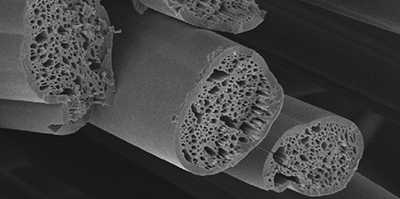
Pudding, glue and yarn
Gelatine is obtained from collagen, the most abundant protein in the human body and the main component of connective tissue and skin. This biopolymer consists of a triple helix of thread-like proteins that are wound around each other like the stripes of a candy cane. The process for obtaining gelatine involves partially denaturing the collagen, which causes the triple strands to unwind and the individual threads to rearrange themselves. Gelatine can absorb large volumes of water and swell up enormously. For this reason, it is often used as a gelling agent when making puddings and mousses. The skin and bones of cattle and pigs are the chief sources of gelatine; in the past, collagen was also used to manufacture animal glue.
Literature references
Stoessel PR, Krebs U, Hufenus R, Halbeisen M, Zeltner M, Grass RN, Stark WJ. Porous, Water-Resistant Multifilament Yarn Spun from Gelatin. Biomacromolecules, 2015, 16 (7), pp 1997–2005. DOI: external page 10.1021/acs.biomac.5b00424
Stoessel PR, Raso RA, Kaufmann T, Grass RN, Stark WJ. Fibers Mechanically Similar to Sheep Wool Obtained by Wet Spinning of Gelatin and Optional Plasticizers. Macromolecular Materials and Engineering. Volume 300, Issue 2, pages 234–241, February 2015. DOI: external page 10.1002/mame.201400240
Stoessel PR, Grass RN, Sánchez-Ferrer A, Fuhrer R, Schweizer T, Mezzenga R, Stark WJ. Spinning Angora Rabbit Wool-Like Porous Fibers from a Non-Equilibrated Gelatin/Water/2-Propanol Mixture. Advanced Functional Materials. Volume 24, Issue 13, pages 1831–1839, April 2, 2014. DOI: external page 10.1002/adfm.201303321
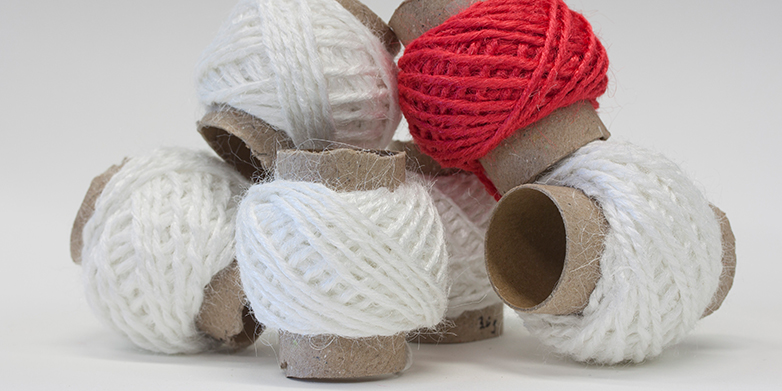
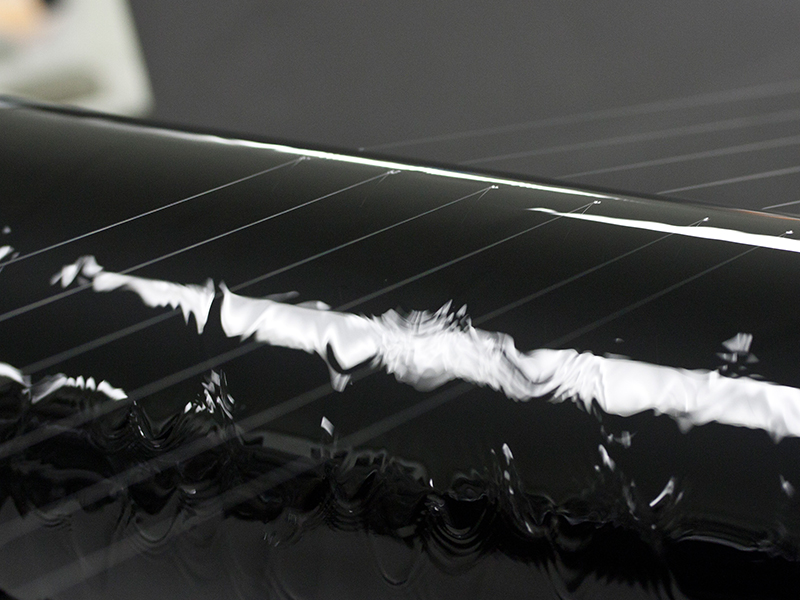
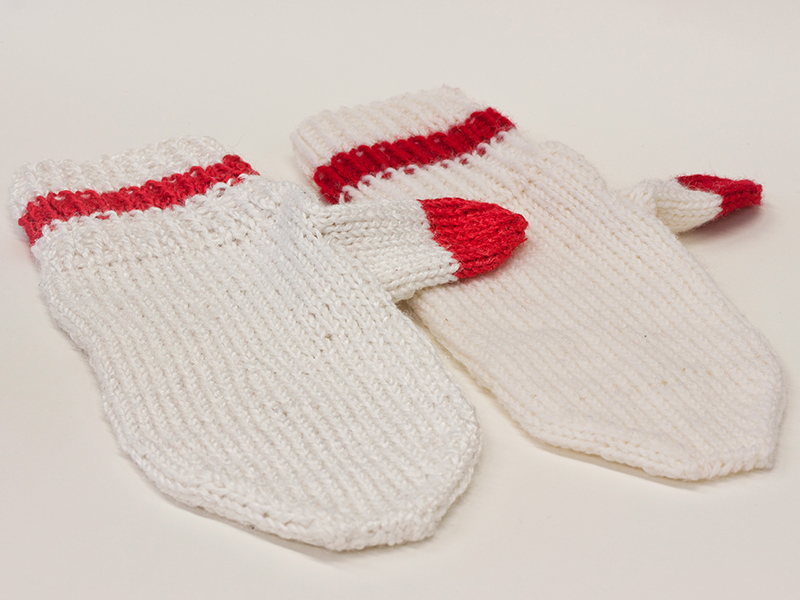
Comments
No comments yet